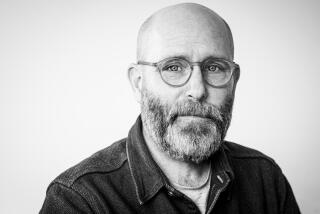Photographer documented boxing rings, life in Russia
John Ranard, a documentary photographer who depicted the grim realities of life in modern Russia and who presented intimate views of boxing and his own fatal illness, died May 14 of liver cancer at Mount Sinai Hospital in New York. He was 56.
Ranard was best known for contributing the photographs that accompanied Joyce Carol Oates’ text in the 1987 book “On Boxing.” Oates said the idea for the book was Ranard’s, who wrote to her after reading an essay she had written about the sport.
“He came out to the house and showed me his pictures,” Oates said in an interview. “They’re very poetic. They’re the highest kind of journalism, where it passes into art. They’re very unpretentious.”
Ranard (pronounced RAY-nard) spent the last 24 years in New York, where he photographed the changing face of the city’s ethnic communities, particularly the East Village neighborhood in which he lived.
Beginning in the 1990s, he made frequent trips to Russia to chronicle the crumbling Soviet empire. Initially, he went on his own, and when his work became better known, he was supported by grants from Doctors Without Borders and the Open Society Institute.
Ranard spoke Russian and was able to ingratiate himself with several groups that were considered dangerous outcasts in Russian society, including drug addicts and prisoners. His searing views of the underside of Russia opened eyes around the world.
He published a book about AIDS patients in the former Soviet Union. Some of his photographs about Russian AIDS patients were featured in a 1997 New York Times article and won first place in the annual Pictures of the Year International contest, sponsored by leading publications and academic institutions.
His photographs were credited with initiating reforms in AIDS treatment in Russia.
John Kent Ranard was born in Washington, D.C., and spent much of his youth in Asia, where his father was a Foreign Service officer. Ranard attended the University of New Mexico. In his early 20s, he developed Hodgkin’s disease and, his doctors believed, contracted hepatitis from a blood transfusion.
In the mid-1970s, Ranard suffered a broken neck in a car accident. After several months of recovery, he received an insurance settlement and moved to Louisville, Ky., where he spent two years at the Center for Photographic Studies. He contributed to alternative publications and began to photograph Louisville’s boxing gyms. He grew particularly close to Greg Page, who was briefly a world heavyweight champion in the 1980s.
In the early 1980s, Ranard traveled the country photographing various sporting events, including boxing matches, the Kentucky Derby and fishing championships in Hawaii. He settled in New York in the mid-1980s and assembled his photographs on boxing into a book called “The Brutal Aesthetic,” which he unsuccessfully sought to publish.
In 2006, Ranard’s health began to worsen, and his hepatitis led to liver cancer. He decided to photograph his physical struggles, including his efforts to recover from a liver transplant in 2007.
His photographs are in New York’s Brooklyn Museum of Art, the Andrei Sakharov Museum in Moscow and the internationally known collection of musician Graham Nash.
Ranard’s marriage to Ann Ranard ended in divorce.
Survivors include two sisters and two brothers.
More to Read
Sign up for Essential California
The most important California stories and recommendations in your inbox every morning.
You may occasionally receive promotional content from the Los Angeles Times.










